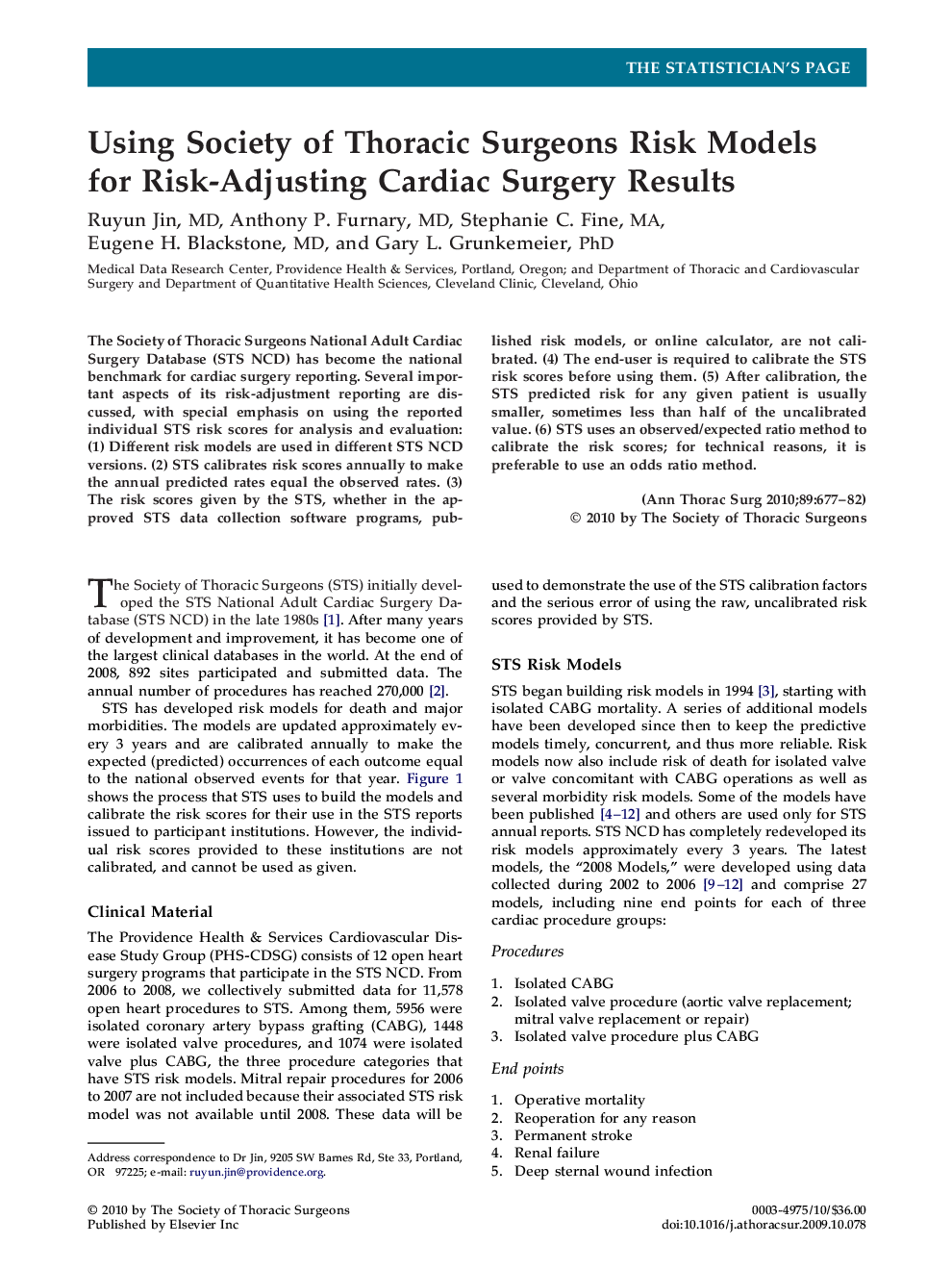| Article ID | Journal | Published Year | Pages | File Type |
|---|---|---|---|---|
| 2879081 | The Annals of Thoracic Surgery | 2010 | 6 Pages |
Abstract
The Society of Thoracic Surgeons National Adult Cardiac Surgery Database (STS NCD) has become the national benchmark for cardiac surgery reporting. Several important aspects of its risk-adjustment reporting are discussed, with special emphasis on using the reported individual STS risk scores for analysis and evaluation: (1) Different risk models are used in different STS NCD versions. (2) STS calibrates risk scores annually to make the annual predicted rates equal the observed rates. (3) The risk scores given by the STS, whether in the approved STS data collection software programs, published risk models, or online calculator, are not calibrated. (4) The end-user is required to calibrate the STS risk scores before using them. (5) After calibration, the STS predicted risk for any given patient is usually smaller, sometimes less than half of the uncalibrated value. (6) STS uses an observed/expected ratio method to calibrate the risk scores; for technical reasons, it is preferable to use an odds ratio method.
Related Topics
Health Sciences
Medicine and Dentistry
Cardiology and Cardiovascular Medicine
Authors
Ruyun MD, Anthony P. MD, Stephanie C. MA, Eugene H. MD, Gary L. PhD,
